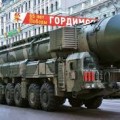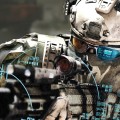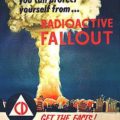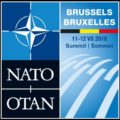While there has been a delayed, and hopefully not too late, awakening to the extraordinary threat posed by China’s massive leap in naval power in the Pacific, Russia’s significant increase in its seafaring nuclear threat and its aggressive moves in the Atlantic and the waters surrounding Europe doubles the challenges facing the U.S. Navy.
An Atlantic alliance review reports “ NATO seems to have neglected the sea as a domain of competition, influence and warfare.”
According to British sources, “Russian naval activity is now at its highest levels since the Cold War…Putin has given priority to nuclear weapons and development of their delivery platforms. Three of the eight planned Borei class SSBNs are operational … It was revealed in 2015 the Russian are developing the Status-6 nuclear-armed [weapon] which can be launched from a torpedo tube. Having a range of more than 6,000 miles, it is designed to attack ports and coastal areas by creating a tsunami and contaminating the area with radioactive cobalt-60…Faced with a nuclear-armed power, with a strong, unpredictable leader who will probe for weakness and get away with what he can…politicians must face up to this inconvenient reality.”
According to NATO, “At sea, Russia is in the process of rebuilding its naval forces… focusing on blue-water high intensity warfighting capabilities. Delivering the 100 additional warships (54 major combatants) and submarines (24 new conventional and nuclear hulls) planned before 2020 will be challenging, but it is a coherent force design that will continue to challenge NATO’s naval power for at least two decades.
“There are three notable aspects of Russian naval force development. First, the continued development of the Russian submarine programme, combining autonomous systems with traditional manned platforms. Second is the evolution of Russian missile technology, covering land attack, naval strike, cruise and short-range ballistic systems capable of overwhelming or defeating Western defences.
“Finally, it is clear that Russian forces are not simply investing in new capabilities and technology. Instead it seems that they see opportunities in combining technologies with high political will, an ability to act unpredictably and to out-think NATO. Russia’s Ocean Multipurpose System Status-6 is a good example of this, combining autonomy, weapon knowledge, undersea expertise and stealth into a potentially lethal combination…
“That concept of fighting – marrying high political will with geographic unpredictability, knowledge of key domains and a willingness to act outside Western rules of engagement (legally, ethically and morally) – is a distinct challenge for political and military commanders in NATO. By exercising hybrid, grey zone or threshold approaches to activities short of conflict, Russia has seized the initiative on land, and is doing so at sea.
“Moscow can now disrupt European states with capabilities that threaten undersea cables (power, internet and water), fishing and trade activities, Arctic routes, and potentially dictating the pace and scale of migration flows. Simultaneously, Russian air, surface and subsurface forces distract and discombobulate commands from seeing the entirety of the picture. Actions in the Atlantic, under the ice in the Arctic, the Aegean, the Black Sea, the Baltic and the Mediterranean are all linked in Russian thinking. It is a coherent and masterly plan – if somewhat opportunistic in character.”
In response, U.S. Navy Secretary Richard Spencer announced the re-establishment of the 2nd Fleet. According to the U.S. Naval Institute, (USNI) this was done to counter “…a more active Russian fleet and increasing military competition across the world.” Spencer noted that “Our national defense strategy makes clear that we’re back in an era of great power competition as the security environment continues to grow more challenging and complex…That’s why …we’re standing up 2nd Fleet to address these changes, particularly in the North Atlantic.”
Bluntly, this response, while a welcome recognition of the threat and a necessary step, only provides the paperwork response. Both U.S. and NATO nations need to do far more to meet the combined Russian/Chinese threat.
Frank Vernuccio serves as editor-in-chief of the New York Analysis of Policy & Government

















Follow Us